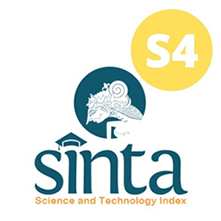The Implementation of Life Saving Facilities at RSUD Surabaya East Java Province in 2023
Abstract
The implementation of life-saving facilities is crucial to be considered in a hospital in order to minimize adverse events during emergency conditions. This study aims to describe the implementation of life-saving facilities at RSUD Suraabaya, East Java Province. The research utilizes a descriptive method with data collection through observation and measurement. The research subject is located at RSUD Surabaya, East Java Province, with the K3RS organization as the respondent. The variables examined include the identification of potential fire hazards and life-saving facilities such as emergency stairs, emergency doors, emergency lights, exit routes, exit signs, and assembly points. Data analysis is conducted descriptively. The research findings indicate that the identification of potential fire hazards in both the New and Old Buildings under normal conditions is in accordance with the applicable Standard Operating Procedures (SOP). Emergency stairs and emergency doors fall under the category of being sufficient, emergency lights fall under the category of being insufficient, while the exit routes, exit signs, and assembly points fall under the category of being good. Overall, the assessment of life-saving facilities falls under the category of being sufficient. Therefore, it is recommended that RSUD Surabaya, East Java Province, conducts monitoring regarding the compliance with SOP, carries out improvements, and procures life-saving facilities that do not meet the requirements.

This work is licensed under a Creative Commons Attribution-ShareAlike 4.0 International License.
Authors who publish with this journal agree to the following terms:
- Authors retain copyright and grant the journal right of first publication with the work simultaneously licensed under a Creative Commons Attribution License that allows others to share the work with an acknowledgement of the work's authorship and initial publication in this journal.
- Authors are able to enter into separate, additional contractual arrangements for the non-exclusive distribution of the journal's published version of the work (e.g., post it to an institutional repository or publish it in a book), with an acknowledgement of its initial publication in this journal.
- Authors are permitted and encouraged to post their work online (e.g., in institutional repositories or on their website) prior to and during the submission process, as it can lead to productive exchanges, as well as earlier and greater citation of published work (See The Effect of Open Access).











